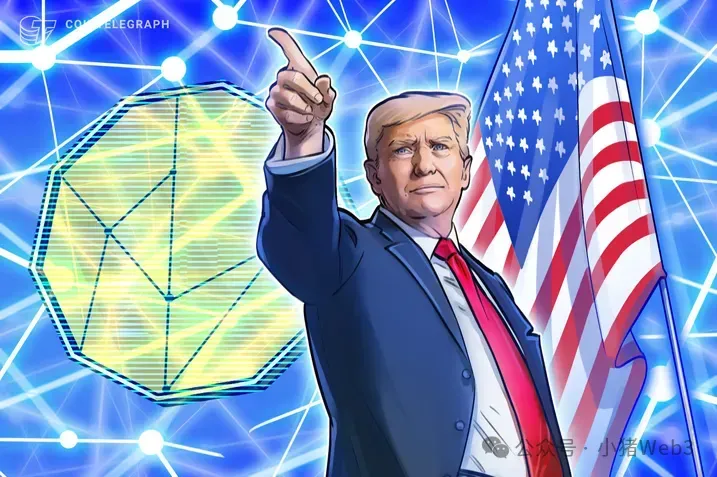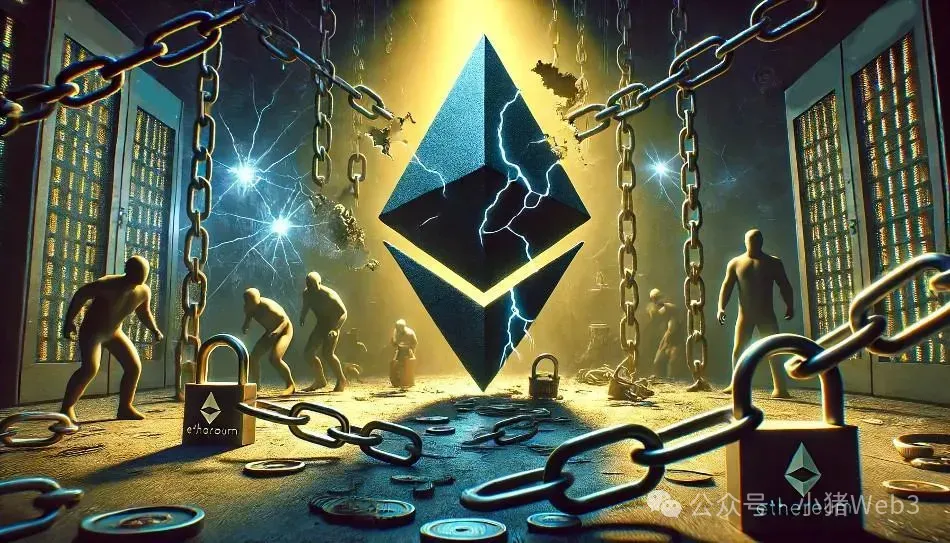Foreword
On the morning of January 8th, Trump posted on Twitter and his social media platform Truth Social, launching a Meme coin called TRUMP on Solana. Within just four hours, the market cap of TRUMP surged to $16 billion, making it the second-largest Meme coin after Dogecoin. On January 9th, the price of TRUMP continued to skyrocket, with its market cap reaching $80 billion at one point, surpassing Dogecoin to become the largest Meme coin by market cap and closing in on the $50 billion market cap of SOL, the native token of Solana, in just 2 days, a journey that took Dogecoin 11 years.
Solana's native token SOL also benefited from this, continuing its upward trend. According to a report by the New York Post on January 16th, Trump has an "open attitude" towards using digital currencies (such as SOL, USDC, and XRP) issued in the US as strategic reserves. SOL and XRP (Ripple) are expected to launch spot ETFs this year, with their prices rising more than 40% in the past week, and voices in the community calling to "flip Ethereum" are gradually emerging.
However, ETH (Ethereum) and its DeFi tokens (LINK, AAVE, ENA, etc.) that shone during the "Trump effect" last December did not perform as well. Particularly for Ethereum, as the second-largest cryptocurrency with a market cap only behind Bitcoin and the only one with a spot ETF, its gains were far behind BTC, SOL, and XRP. The Ethereum Foundation has also recently been criticized by the founders of several well-known projects, putting it in a difficult situation.
The Impact of Trump's Coin

First, TRUMP is not a Meme coin that was "spur-of-the-moment" issued on the largest Meme coin platform Pump.fun on Solana, but a well-planned collaborative action with Solana and multiple protocols and related projects on its chain, which can be seen as a VC coin disguised as a Meme coin. The collaborators include Jupiter, the largest DEX aggregator on Solana, the liquidity protocol Meteora, the Meme coin trading platform Moonshot, and the market maker Wintermute, which is also the main market maker for many high-value Meme coins, including the well-known PEPE.
Secondly, in the short term, the issuance of TRUMP has caused a huge "blood-sucking effect", draining the market's liquidity and leading to the collapse of cryptocurrency prices outside the Solana ecosystem. TRUMP's deployment on the Solana chain will further strengthen the market recognition of the Solana ecosystem, and Meme coins and AI coins on the Solana ecosystem have also gained more liquidity, increasing the revenue of DeFi protocols on Solana. The crypto market has also welcomed a new wave of users, with Moonshot reporting that they have attracted over 400,000 new users within 24 hours. In addition, on-chain tools like GMGN have also become beneficiaries, with their revenue exceeding that of the largest DeFi protocol Uniswap in the short term.
Finally, in the long run, Trump is fulfilling his crypto policy promises, and combined with his statement at the World Economic Forum in Davos that he plans to turn the US into the "world capital" of AI and cryptocurrencies, Trump's own coin issuance actually shows a relaxed stance on crypto regulation. Trump's family's World Liberty Financial is not only involved in the DeFi field, but is also actively deploying RWA (real-world assets), which may drive more traditional financial institutions to enter the DeFi field. Additionally, US-based cryptocurrencies like Solana, Ripple, and Sui are likely to see policy benefits, and the first two are seeing progress in their ETF approval process.
Let's further introduce Solana and Ripple, and their differences from Ethereum.
Ethereum was born in November 2013, when Russian-Canadian programmer Vitalik Buterin published a white paper on "Ethereum: The Next-Generation Smart Contract and Decentralized Application Platform". Compared to Bitcoin's single cash system function, Ethereum is a decentralized global computing platform that can run smart contracts of any complexity. ETH (Ethereum's native cryptocurrency) is the second-largest cryptocurrency by market cap after Bitcoin and is currently the only cryptocurrency with a spot ETF. Ethereum is the beginning of Web3, ushering in the era of blockchain smart contracts and catalyzing the DeFi project explosion on Ethereum in the summer of 2020, such as Uniswap, the largest DEX on Ethereum, which saw its trading volume exceed $450 billion in 2023, surpassing the spot trading volume of the largest US exchange Coinbase.
Ripple was born in September 2012, earlier than Ethereum, originally as the RipplePay project, and was later taken over by Jed McCaleb, Chris Larsen, and Arthur Britto to create Ripple (XRP). Ripple was established to revolutionize the global remittance industry, replacing old systems like SWIFT. Strictly speaking, Ripple is not a public blockchain, but a permissioned blockchain, as it uses a PoA (Proof of Authority) consensus mechanism, where transactions and blocks need to be verified by approved validators (called the UNL list), making it more centralized than traditional blockchains like Bitcoin and Ethereum, but also demonstrating better scalability. In addition, Ripple donated $5 million worth of XRP to support Trump's presidential inauguration ceremony.
Solana was born in November 2017, when former Qualcomm engineer Anatoly Yakovenko released a white paper introducing "Proof of History" (PoH) - a mechanism for maintaining time between untrusted computers. With PoH, Anatoly set out to build the Solana blockchain, aiming to match the performance of a single machine and overcome the scalability constraints of traditional blockchains like Ethereum, allowing more efficient data propagation between nodes and achieving a high-performance Layer1 that scales with hardware speed. Solana has many technical advantages that directly target Ethereum's shortcomings, such as super-fast speed, with a real peak daily transaction rate of up to 1,000 TPS, compared to only 20 TPS for Ethereum, and super-low fees, which are only 1% of Ethereum's.
Ethereum's Internal and External Troubles
Ethereum's predicament can be summed up in four words: "internal and external troubles".

Internal Troubles
The Ethereum Foundation has recently become the target of criticism, mainly due to its inaction, continuous on-chain ETH sales, lack of connection with the community, and strategic issues with Layer2. Synthetix and Infinex founder Kain Warwick believes that pressure should be put on Layer2 to buy back ETH, while Curve founder Michael Egorov is more radical, suggesting abandoning Layer2 and developing Layer1. AAVE founder Stani Kulechov believes the Ethereum Foundation needs a thorough reform in 12 aspects.
On January 18th, Vitalik stated that in response to the criticism the Ethereum Foundation has received for its lack of engagement with the Ethereum ecosystem, there will be "major changes" in the foundation's leadership structure, communication with the network developer community, and support for them. Regarding the issue of on-chain ETH sales, on January 21st, the Ethereum Foundation announced the establishment of a wallet address to participate in DeFi. The organization plans to inject about $150 million worth of ETH into this wallet, but noted that it may take several days to complete the setup.
On January 22nd, Lido co-founder Konstantin Lomashuk shared a post hinting at the establishment of a "Second Foundation". He stated: "Ethereum is the ultimate world computer, and every Ethereum enthusiast can help it grow, evolve, and succeed. If a Second Foundation is truly established, it must have a clear goal to complement the tremendous work of the current contributors. I thank everyone for their support and believe we need more organizations to contribute to Ethereum."
Here is the English translation of the text, with the specified terms retained and not translated:On January 24, Vitalik published an article discussing Ethereum's scaling strategy for 2025 and the future. He emphasized Ethereum's unique advantages in terms of decentralization ideology and practical application value, and stated that the success of Layer2 has confirmed the development philosophy of the Ethereum ecosystem, and he will continue to adhere to the Layer2 strategy. Vitalik pointed out two major challenges facing the current situation: scaling capacity and heterogeneity issues, with specific plans including: increasing data block capacity, strengthening interoperability and ZK-EVM, building security, and optimizing the economic model.
External Troubles
The two cryptocurrencies with similar market capitalizations are Ripple and Solana. But Ripple is not actually a competitor, as it was introduced in the previous chapter. Ripple is a permissioned blockchain, and since Ripple's main clients are international banks and investment companies, its key goal is regulatory compliance rather than decentralization, so the use of a permissioned blockchain is understandable. Therefore, Ethereum's main competitor is still Solana, which is also a public blockchain. Putting aside the "Trump factor", we can compare the two blockchains from the perspectives of decentralization, scalability, and ecosystem.
It is generally believed that Ethereum's degree of decentralization is higher than Solana's, but the reason for using "generally believed" is that decentralization itself is an abstract concept and difficult to measure. General indicators include the number and distribution of nodes, the distribution of token holders, the diversity of clients, the Nakamoto coefficient, and the governance process. To avoid controversy, the author only represents his personal opinion: if Ethereum's decentralization is scored 100 points, Solana would be around 70-80 points, while other PoS blockchains are below 60 points.
However, from the perspective of scalability, Solana can score 90 points, while Ethereum is below 10 points. But Ethereum's solution to the scalability problem is to adopt Layer2, by building an additional network layer on the Ethereum chain, allowing more transactions to be processed while maintaining security and decentralization. Currently, Base is the largest Layer2 on Ethereum, developed by the cryptocurrency exchange platform Coinbase and Optimism, with a maximum TPS of 300, but this is still significantly lower than Solana.
The ecosystem is Ethereum's biggest advantage. Ethereum's mainnet was launched 6 years earlier than Solana, accumulating a large number of developers and users, with a wealth of infrastructure and long-term applications built around Ethereum. However, since 2024, the number of new developers on Solana has surpassed Ethereum. For users, most of them are trading on on-chain DEXes, and due to the wealth effect of MEME coins and AI coins on Solana, the number of active users has recently surpassed Ethereum.
Conclusion

The author is not actually that pessimistic about Ethereum's future development. The author joined the Web3 industry in 2020, and was attracted by Ethereum's innovation that year, and has also contributed to LXDAO and ETHPanda, and has met Vitalik and heard his sharing on multiple occasions.
From an emotional perspective, the author believes that Vitalik is an outstanding leader with a "computer culture" quality. Although he does not have flashy marketing rhetoric, he can listen to information, respond to problems, and make decisions. So the author also believes that the Ethereum Foundation can successfully reform under Vitalik's leadership.
From a technical perspective, the author believes that Ethereum has formulated a long-term and detailed technical roadmap to implement its decentralization ideology, and in the future, Ethereum can achieve over 10,000 TPS, second-level transaction confirmation, and low transaction fees through Layer2, of course, on the premise that it can be delivered on schedule.
As for the competitor Solana, Solana's current positioning is a consumer-grade public blockchain, and it has gradually occupied the user mindset in the ToC field, after all, users are not so concerned about decentralization, but care more about real low transaction fees and high transaction speeds. For Ethereum to match Solana in high performance, it may still take three to five years of technical implementation, so the window of opportunity is not large.
However, Ethereum can take a completely different path, positioning itself as a financial-grade public blockchain, with Layer1 focusing on the ToB direction, attracting traditional financial institutions to expand their Web3 business, a typical example being RWA. The financial business in the real world is inherently a conservative system, requiring higher system stability, low risk, and low maintenance. Ethereum has never experienced downtime, its decentralization is still stronger than Solana, and its ecosystem is significantly stronger than Solana. Ethereum still has the most developers and the most complete infrastructure, and the prosperity of DeFi in a cycle has also accumulated a large number of financial security usage constraints and contract examples, which are all temptations to attract traditional financial institutions.
Finally, the author wants to say that Ethereum must take immediate action to address the internal management issues of the Foundation and the competitive pressure from external Solana, and cannot just talk about technology and ideals while neglecting users and the market. But overall, Ethereum is already ten years old, and any company that reaches ten years must undergo changes due to changes in the external environment and internal interest distribution, and the problems Ethereum is facing now will also be the problems Solana will face in the future. "Embracing change" is the best way for Ethereum to move towards a bright future.








